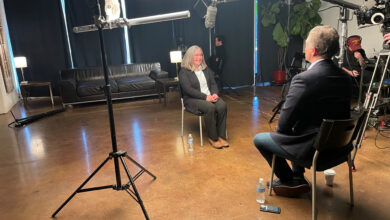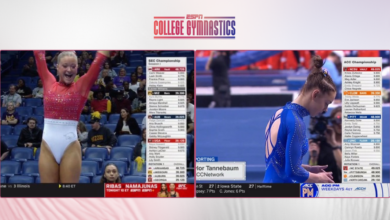The US Open is ESPN’s biggest production of the year – more than 1,300 hours of coverage from up to 16 courts across three weeks with telecasts lasting 12 or more hours. Whew! As host broadcaster for networks around the world, ESPN’s coverage is distributed to virtually every corner of the globe.
From the USTA Billie Jean King National Tennis Center in Flushing, N.Y., this Olympic-sized effort requires a literal broadcast center of equipment, control and audio rooms, servers and office space. Here’s a tour of some of the highlights:
ESPN Broadcast Center
This is a two-story, 10,500-square foot, custom-built facility that is home to the entire Host Broadcaster operation, as well ESPN’s Domestic PCR, ACR, EVS, Ingest, Media Management and Graphics areas. In addition, this facility houses our Communications control room, Transmission, Engineering support and Video shading areas.
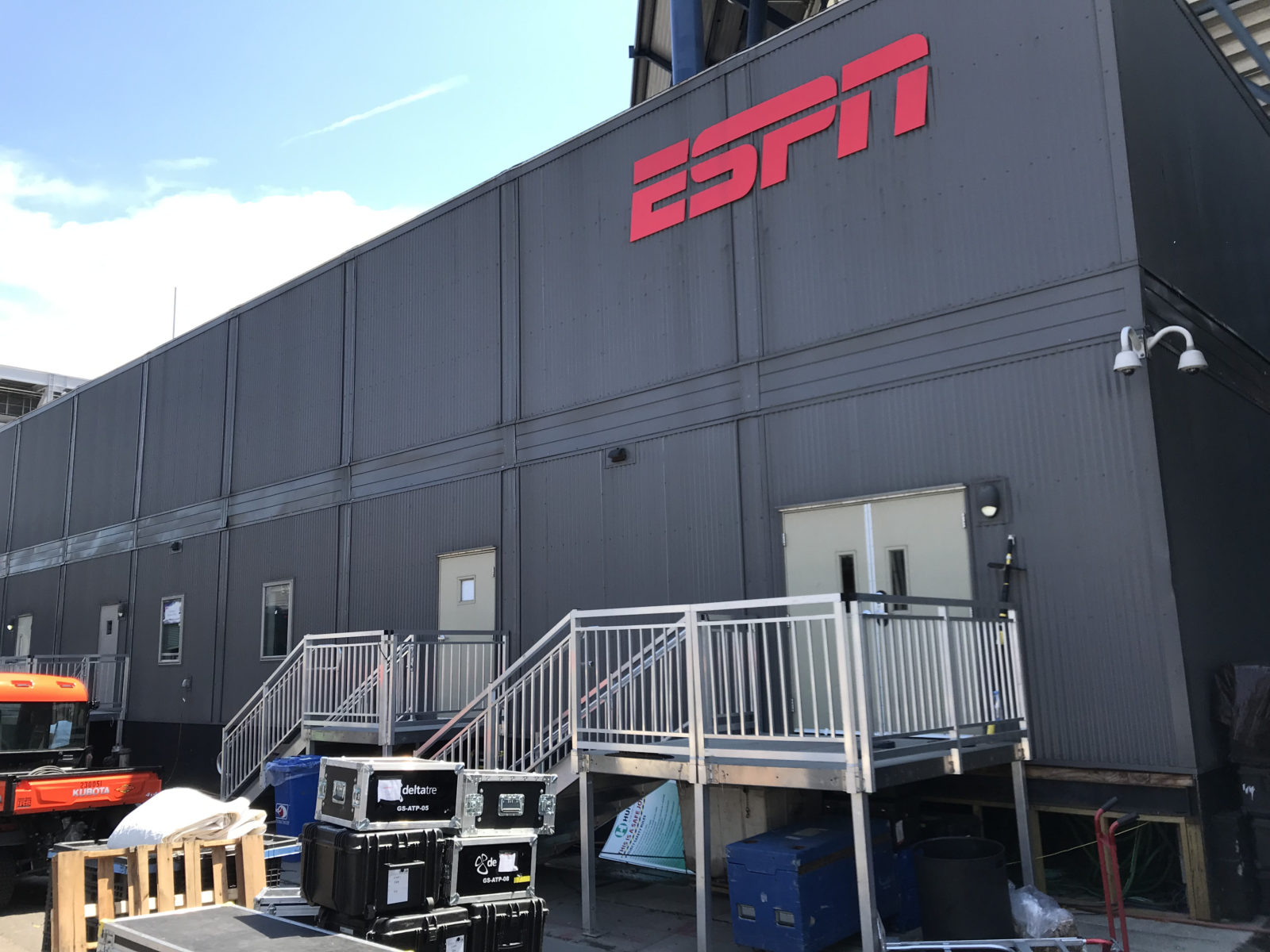
ESPN’s Domestic Control Room Monitor Wall
This consists of 15 x 55” and 7 x 32” screens that are fed by a mixture of Evertz multi-viewers, direct video feeds and statistical channels. There are approximately 200 monitor sources available for display of court feeds, cameras, graphics sources, program feeds and network returns.
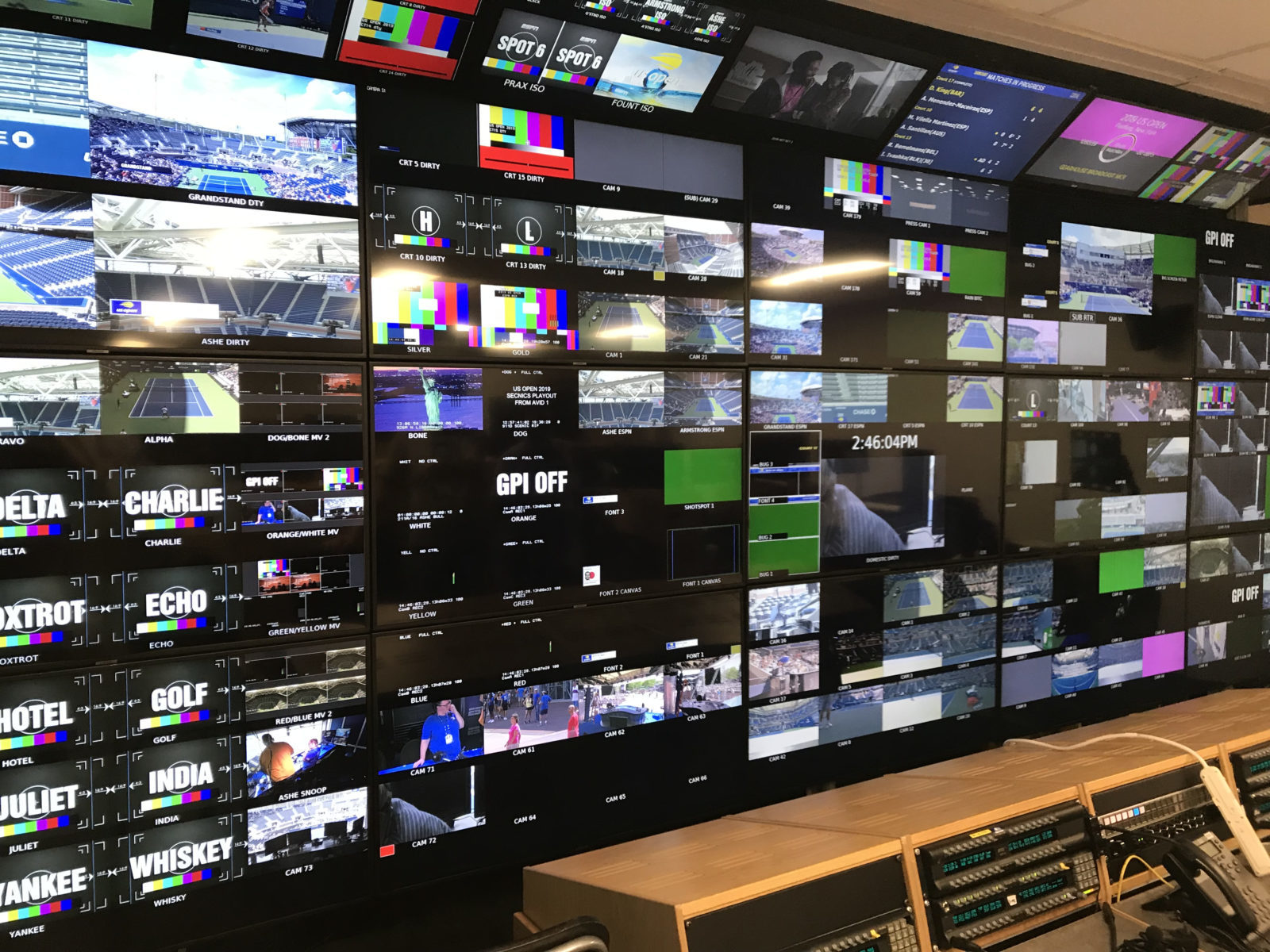
ESPN Domestic Coverage Audio Control Room
This area utilizes a 64-fader Lawo MC56 MK-II digital audio mixing console. All Lawo consoles are connected to a centralized MADI core that facilitates access to any audio signal available within the Broadcast Center. The room is further enhanced with an ENCO audio record/playback device, as well as a WAVES Sound Grid that allows for processing to optimize our final audio output.
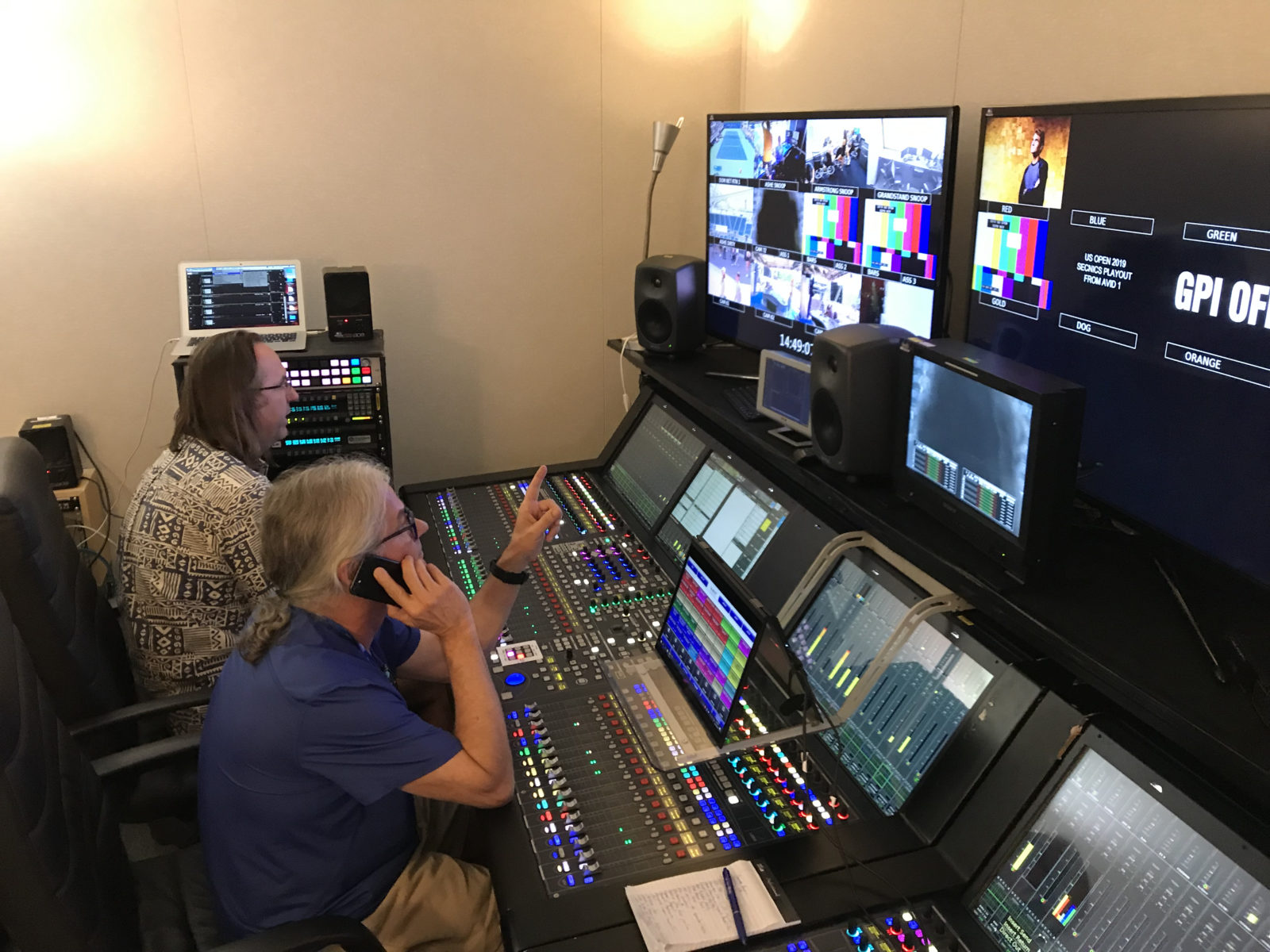
Host Broadcaster EVS Operations Area
This area supports the replay of any of our coverage cameras located at one of the seven main tennis courts. There are 20 operating positions in the Host EVS room. The largest of the courts, Arther Ashe Stadium is supported by six EVS Servers. The smaller courts (courts 10 and 13] have two complete servers and share replay channels on a third unit.
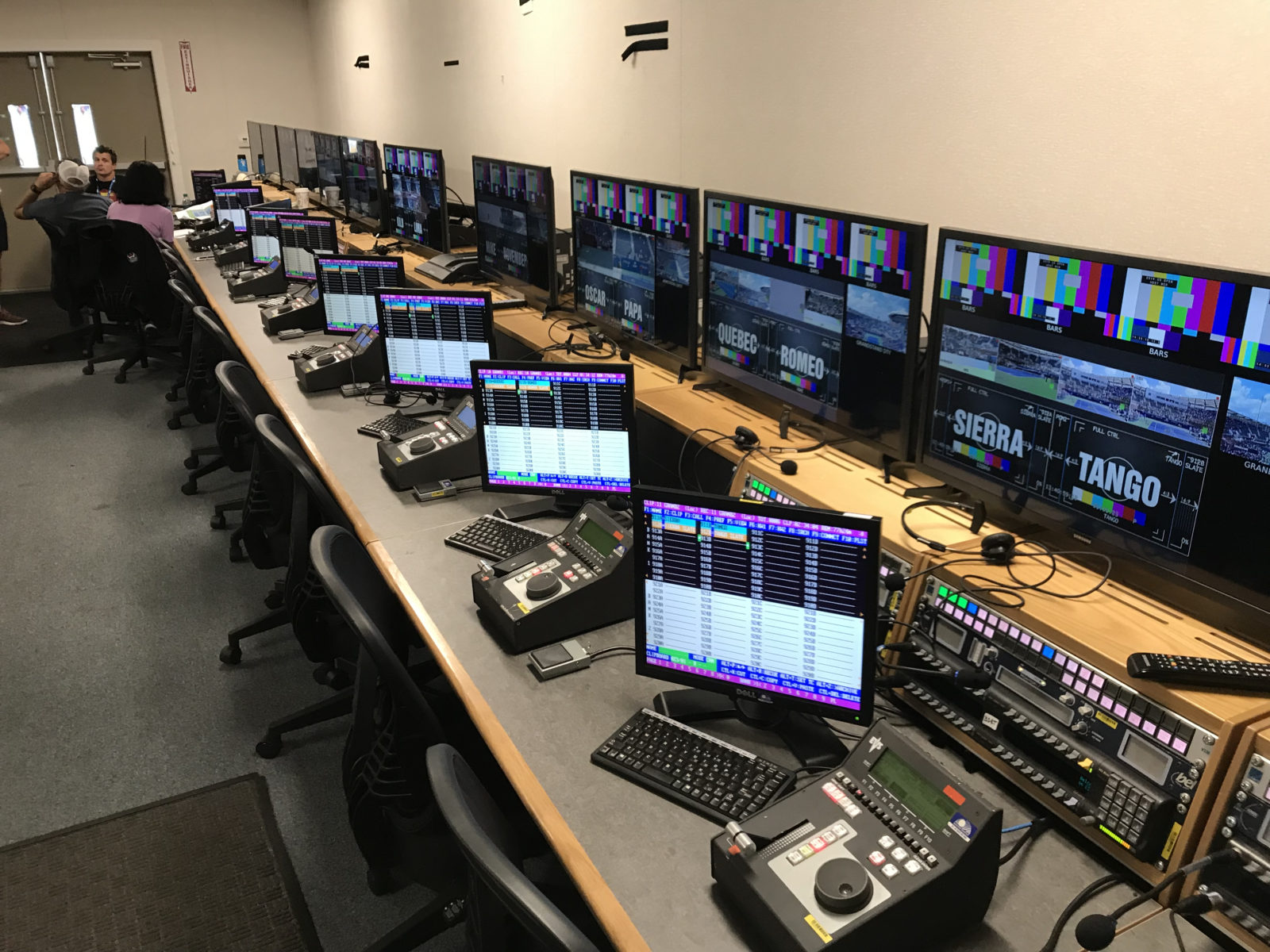
Central Apparatus Room (CAR)
It might look like a mess, but the Central Apparatus Room [CAR] consists of 56 equipment racks integrated together to create the core of the system. Detailed wiring schedules are created in advance and integration is carried out on site. The 56 racks consist of Video, Audio, Communications, Replay, Graphics, Scoring, IT and Transmission equipment.
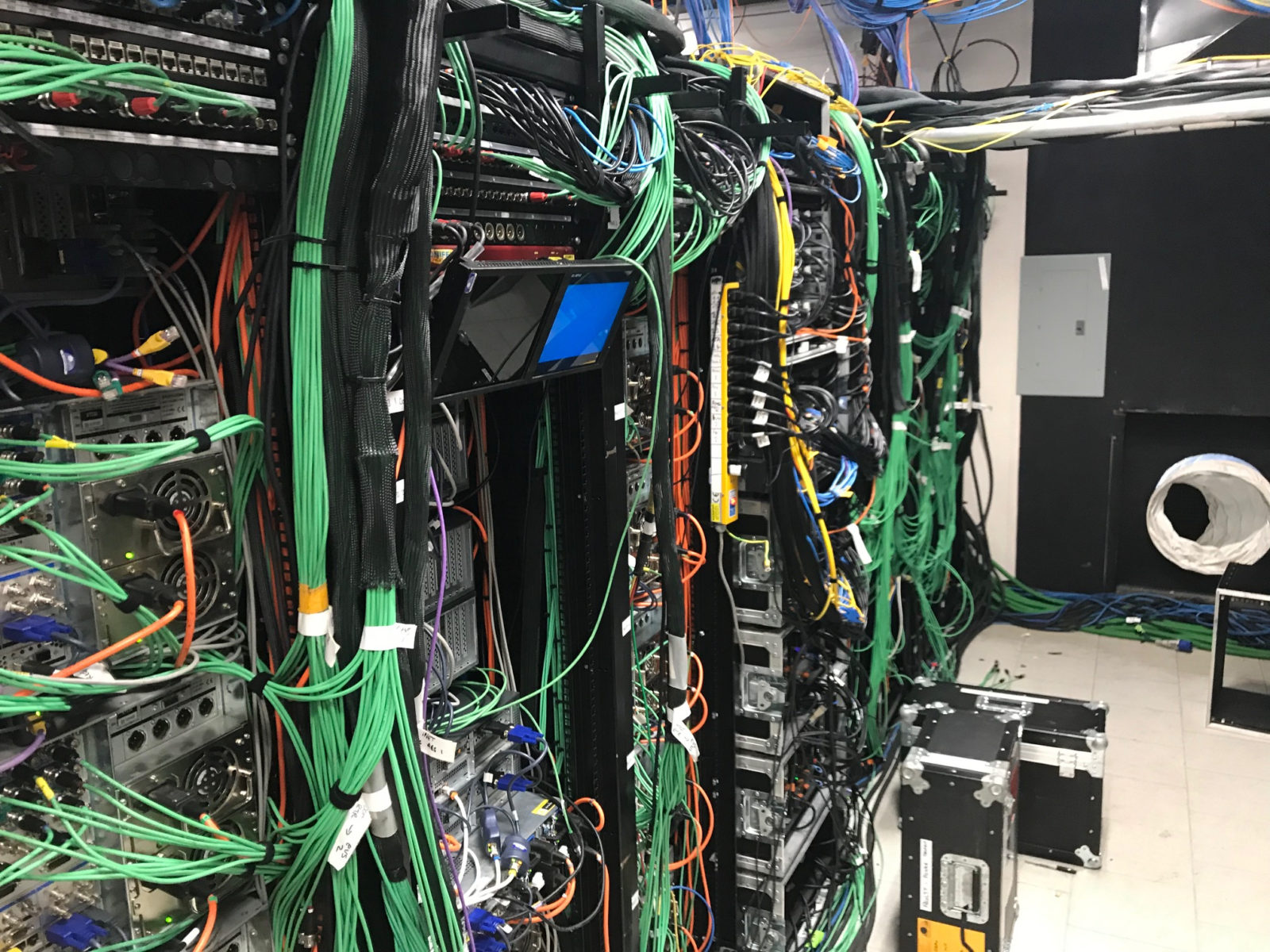
Outer Court Coverage via ESPN ACES
From this room ESPN produces host broadcaster coverage of nine outer courts using our ACES (Automated Court Enhancement System) execution model. The ESPN ACES system is based on a Simply Live ViBox video production system, combined with an automated camera system called Fletcher Trace. Rather than nine mobile units, each court is produced by two operators. Automated stats are added as NDI graphic sources through the ViBox. Coverage is enhanced with beauty cameras located around the venue.
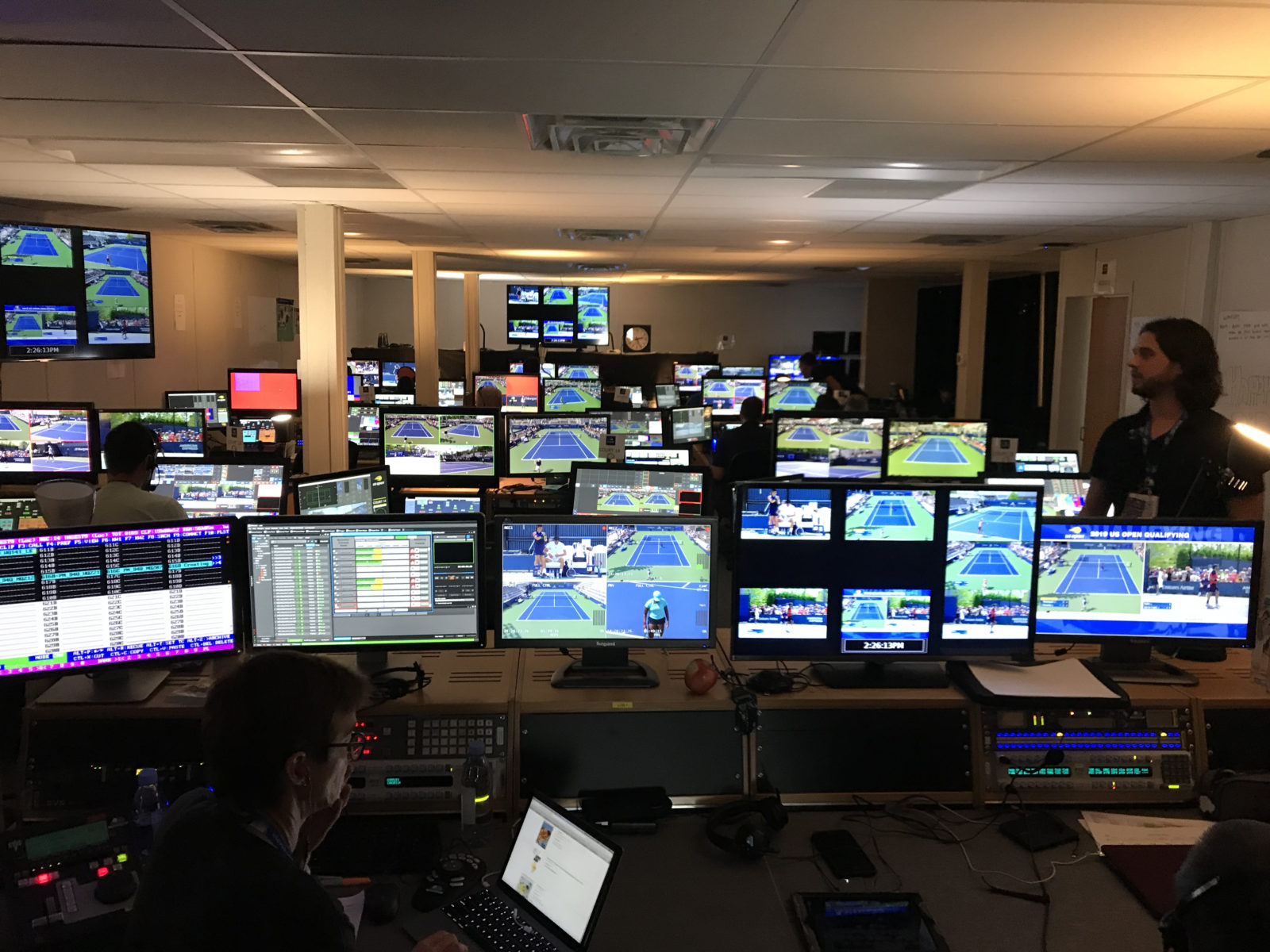
Senior Vice President, ESPN & ABC Sports Remote Production Operations Chris Calcinari contributed to this post.
